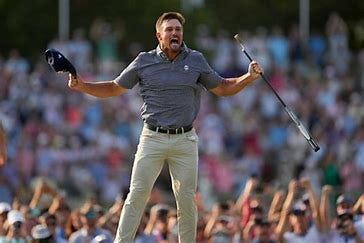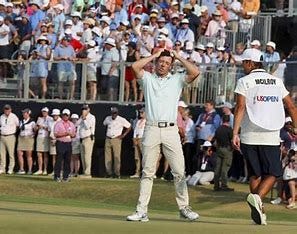US Open Recap
Pinehurst #2 Delivers
Well, Scottie Scheffler is human. The best player on the planet arrived at Pinehurst as the prohibitive favorite. Coming off his win at The Memorial, everyone expected him to win. But Pinehurst #2 showed why it is a great test to produce a worthy US Open champion.
Scheffler appeared a little off right out of the gate. The precise ball-striking we have become accustomed to seeing from him was not there. The putter, which he appeared to have fixed, abandoned him. As a result, he struggled through four rounds.
Scheffler was not alone. Only 9 players finished under par. The best players in the world struggled, but it is a US Open and should be difficult. It should not be a birdie fest like most PGA Tour events. Pars should be coveted. Birdies cherished. Bogeys accepted.
I engaged in some debate on X (you can follow me at jcmmartin65) with some who felt the course was set up too severely. Most of the complaints centered around the speed and slope of the greens arguing Donald Ross didn’t build the greens to run at 13+ on the stimpmeter. Having the greens firm and fast was never Ross’ intention. Let’s look at this argument.
First, when Ross built the course, the greens were oiled sand greens. This was due to not having a strain of grass capable of withstanding the heat of summer. The sand greens Ross originally built were flat. The sand oil combination created a hard surface which would not hold an approach shot. Players played bump and run shots into the greens. Ross introduced Bermuda grass for the greens in May of 1935 along with new green designs. Gone were the flat, oval greens. The great architect and contemporary of Ross, A.W. Tillinghast, commented the greens were perfect and the course contained no weaknesses.
Secondly, technology has changed the game dramatically. Even after the greens were redesigned in 1935, players hit long irons into many of the greens with golf balls which didn’t spin like the modern ball. Players today are hitting short irons or wedges into the greens with high spin golf balls. Add in watering systems, modern mowers and agronomy advancements the greens can be firmer and faster to accommodate the modern player.
Finally, it’s the US Open. While I don’t want to see carnage, I want to see the best golfers in the world struggle with adversity. Regular events are often birdie fests where players can fire at holes without hardly any fear. The US Open is about avoiding big numbers and making a lot of pars. It should be difficult.
As for the native sand and wiregrass. I found it refreshing because it was different. Gone was the rough from previous US Opens at #2. It was as Ross originally designed the course. Players finding these areas off the fairways hoped for clean lies. Some did. Some didn’t. It created some drama. It provided some randomness as some players were punished for an errant tee shot and others were not. While not as much, deep rough also offers randomness. Some balls nestle down deep, and some sit pretty clean. While I prefer the thick, deep rough of most US Open venues, #2 presented something different and unique.
Then came Sunday. A back-and-forth battle between two of the best players on the planet who are both past US Open champions; Rory McIlroy and Bryson DeChambeau. What happened in the final few holes is triumph and tragedy just as a US Open, or any major, should play out. One player faltered in the pressure. Another took advantage and seized the moment.
Rory McIlroy held a one-shot lead with four holes to play. McIlroy, playing in the group in front of DeChambeau, bogeyed the 15th. DeChambeau followed suit. Then came the pivotal moment, the moment which seemed to seal the outcome of the tournament. Rory three-putted the 16th missing a short par putt. DeChambeau parred 16. Both players parred 17. Rory pulled his tee shot into the native area left of the fairway. He hit his second just short of the green. He pitched his shot to a little over three-feet. And missed the putt. DeChambeau needed par at 18 for the win.
DeChambeau also found the native area left of the fairway. His second found the bunker 55-yards short of the green. Anyone will tell you a long bunker is the hardest shot in golf. Needing to get up and down to win the US Open made it even harder. DeChambeau hit the shot to just under four feet. He drained the putt.
Jubilation for one.
Devastation for the other.
No matter your thoughts on the 124th US Open at Pinehurst #2, it provided what we all want as fans on a Sunday in a major; drama.
As always, be thankful when you get to play this amazing game. Be grateful for every shot. Appreciate every moment on the course. Now, go golf!
Keep reading with a 7-day free trial
Subscribe to Go Golf to keep reading this post and get 7 days of free access to the full post archives.




